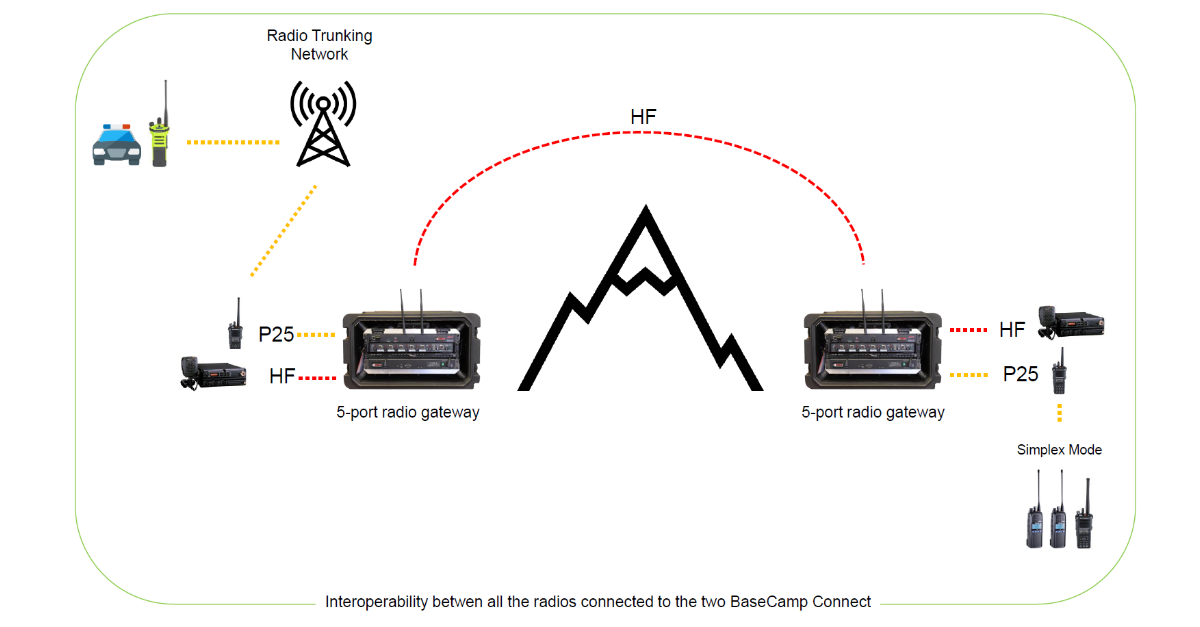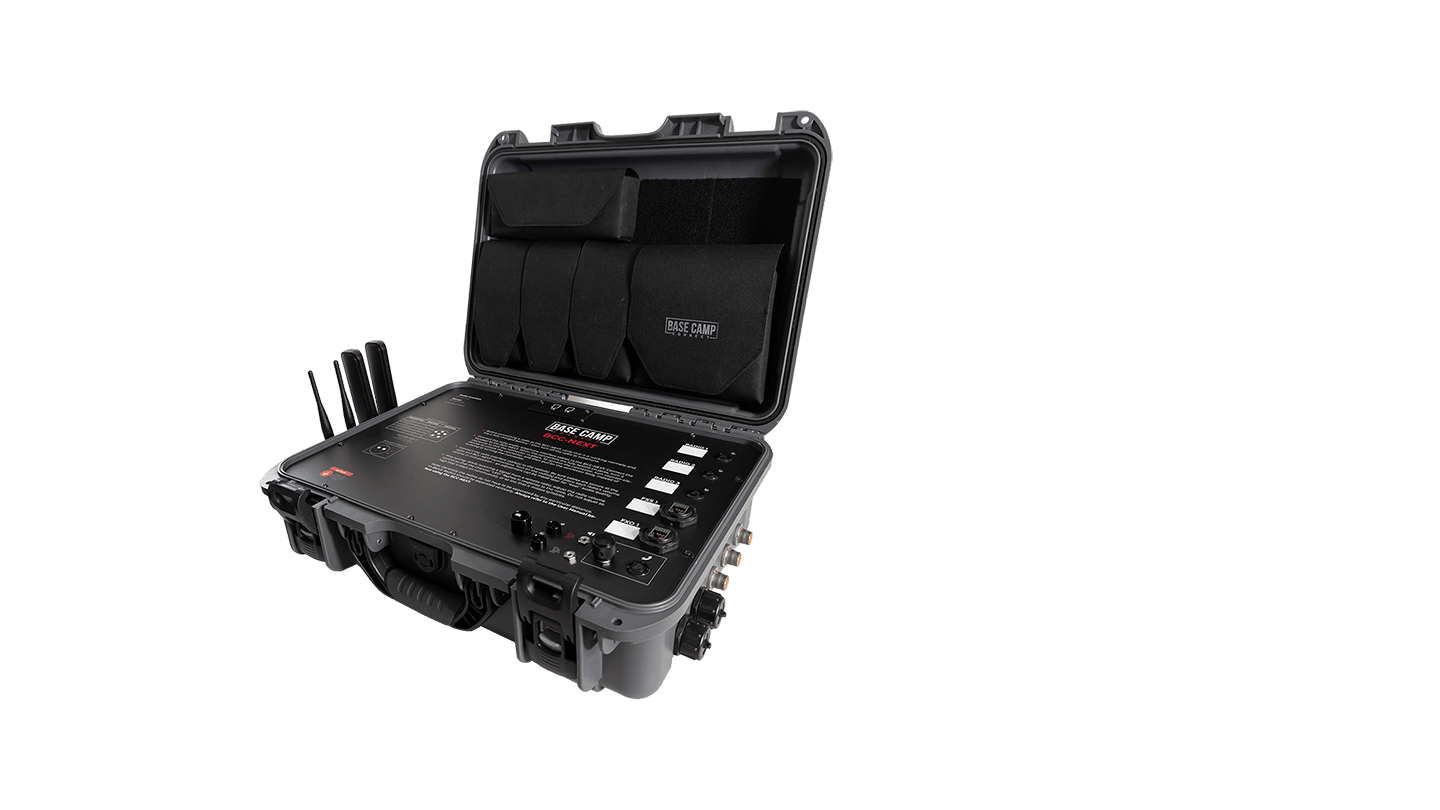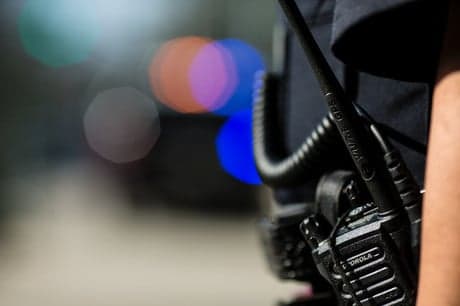‘‘I’d like to have a simple solution to patch our radios with neighboring agencies who are on different frequencies when I need it – that’s my primary need.’’
We often hear a variation of this statement, so we thought we’d write a series on the most common conversations we have with public safety agencies. In this first part, we will cover what we consider to be a representative meeting of the radio needs, and everything else will be covered in a separate post.
In the first 20 minutes of face-to-face meetings, the conversation revolves around radio use, coverage issues, surrounding agencies, interoperability issues, etc. This is normal: radios have been the tool to communicate during emergencies forever in public safety. Even if radio integration projects have been initiated in the past decades to break the silos and reach across departments and agencies, there are still many Public Safety neighbors that don’t even have simple interoperability solutions when needed. Cost, as it turns out, is a major player in getting an interop solution at all.
On the technology side, options to palliate this issue are diverse, growing every day, and are getting more advanced and complicated as technology evolves. This widens the possibilities of interoperability and even incorporate devices like tablets & smartphones. But in some cases, getting the latest technology means heavy involvement of IT personnel for installation, maintenance, and even operation. It’s not radios anymore, it’s web-based applications, and so on…

Radio interoperability solutions greatly evolved over time and the many options available can be confusing. Mission-critical PTT (MCPTT) available to everyone in the coverage zone was the first step to move from »Fire, Police and EMS in the same jurisdiction can’t cross-talk’’ to ‘’we’re all able to talk when needed on common channels’’. Those options did not incorporate neighboring cities/counties, but it was a start and is still better than nothing at all. The establishment of national interoperability channels that followed provided a talk patch within the radio bands, and from there LMR gateways that could patch UHF & VHF radios developed and migrated later to IP-based solutions.
Mission Critical Communications Magazine published an interesting article that goes through the timeline of solutions development from the simple beginnings of MCPTT to today’s broadband gateways and provides an interesting overview of how things got to where they are now. The article is available through the archives, available on page 28 of the March 2017.
Cost as it happens a very important element for most, if not all, of the Public Safety organisations we talk to. A proprietary shared system is everyone’s dream, but the size & cost of such a project makes it unattainable for a lot of agencies. Anyone who recently deployed a new radio system replacing legacy radios knows the deployment and funding of that kind of project is a huge undertaking in time, logistics, and money. Timing can also be a factor: if an agency switched to newer technology radios just a few years ago, they might not want to invest again for a few years as they are absorbing the cost of their recent upgrade.
For that and other reasons, we steer the conversation towards simpler radio interoperability solutions that can be implemented quicker and at a lower cost. Plus, even fully-integrated shared systems can potentially leave some Mutual Aid partners out, who rarely share radio frequencies with public safety but still need to be brought in to common channels when an emergency requiring Mutual Aid occurs. For them, large infrastructure costs are not the appropriate solution, but the need to connect is still there.
The information we are looking for to present an intelligent solution is really focused on the customer working environment, surroundings and current equipment they have that they can leverage with a BaseCampConnect unit. Concerning working environment, knowing who’s around, like school districts, private companies like Automobile or Chemical plants, and proximity to Ports/Airports, with details on how they communicate with them, helps understanding the frequent and less frequent needs. Knowing what’s around, like the physical environment/topography also helps to uncover some common communications gaps (radio communications in caves & tunnels) that they might not have though about before, and is the starting point for discussions on possible solutions. Coverage is almost always discussed and we try to find the most cost-effective ways to work around coverage issues without building new towers. High-power repeaters can increase coverage, and in some cases (Mountainous areas) are an integral part of the solution. HF solutions used by S&R teams are also a good option for bad coverage since they are not as sensitive to dead spots caused by irregular topography. A recent case study we wrote with a New Hampshire Sheriff department illustrates this perfectly. Simpler than that, having a simplex channel on your radios is an effective way to communicate with your team when you’re too far away from the tower.

Mobile emergency go-kits have value for any size of organization, as tactical deploy-kits that fit somewhere in the whole communications equipment picture. Customers who have fixed gateways also use tactical deploy kits, to connect on-the-fly with private companies and so on. Both solutions are complementary, not in competition.
Finally, we polled All-Hazards Incident Management Teams (IMT) officials, a highly-mobile type of Emergency Responder, to ask if they experienced radio failures or failure to communicate in the middle of an emergency. A whopping 57% answered positively. This number means a very simple thing: emergency communications must have a back-up, and sometimes multiple backups are necessary.
In the next blog post, we will talk about other means of communications used in public safety and how they complement radio communications, including MCPTT LTE applications. Until then, keep safe.













